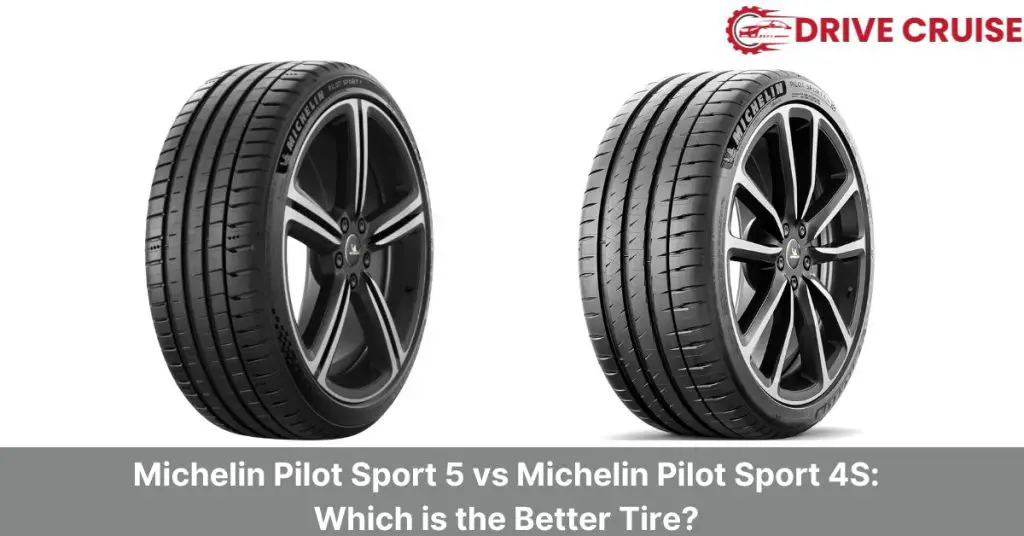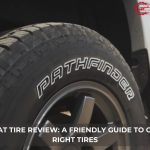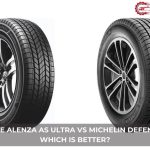If you’re in the market for high-performance tires, you’ve likely come across Michelin’s Pilot Sport line. Known for its exceptional grip, handling, and durability, it’s no surprise that these tires are a popular choice among driving enthusiasts. But with the recent release of the Pilot Sport 5, you may be wondering how it stacks up against the tried-and-true Pilot Sport 4S.
The Michelin Pilot Sport 5 vs 4S debate is one that has been raging among car enthusiasts since the former’s release. While the two tires share many similarities, there are also some notable differences that could sway your decision one way or the other. In this guide, we’ll break down the key features of each tire, highlighting their strengths and weaknesses, to help you make an informed decision about which one is right for you.
Whether you’re looking for a tire that can handle high-speed driving on dry roads, or one that can provide exceptional grip in wet conditions, we’ll cover everything you need to know about the Michelin Pilot Sport 5 vs 4S debate. By the end of this guide, you’ll have a better understanding of the differences between these two exceptional tires, and be better equipped to choose the one that’s right for your driving needs.
Unveiling the Legacy: Core Similarities Between Pilot Sport 5 and 4S
While distinct in their nuances, both Michelin Pilot Sport 5 and Pilot Sport 4S share core strengths that make them coveted options for performance-oriented drivers.
Ultra-High Performance (UHP) Category
Both tires belong to the Ultra-High Performance (UHP) category, designed to deliver exceptional handling, grip, and responsiveness for spirited driving and performance vehicles. This category of tires is engineered to perform in extreme conditions, providing drivers with the necessary confidence to push their vehicles to the limit.
Excellent Dry Performance
Michelin’s advanced tread compound technology in both Pilot Sport 5 and Pilot Sport 4S ensures exceptional grip on dry roads, allowing for precise handling and confident cornering maneuvers. The tires’ optimized contact patch enhances grip and traction, providing drivers with a smooth and comfortable ride.
Responsive Steering
The Pilot Sport 5 and 4S provide exceptional steering feel and responsiveness, giving drivers a direct connection to the road and allowing for precise control. The tires’ construction and design ensure that the steering response is quick and accurate, providing drivers with a perfect balance of performance and comfort.
Impressive Tread Life (for UHP Tires)
Compared to other UHP tires, both Pilot Sport offerings boast impressive tread life, balancing performance with extended usability. Michelin’s advanced tread compound technology, combined with an optimized tread pattern, ensures that the tires wear evenly, providing drivers with consistent performance throughout their lifespan.
Delving Deeper: Key Differences Between Pilot Sport 5 and 4S
Let’s delve into the critical distinctions that set these tires apart:
Focus and Target Audience (Michelin’s Marketing Claims)
- Pilot Sport 5: Michelin positions the Pilot Sport 5 as an evolution, offering enhanced wet performance and longer tread life compared to the Pilot Sport 4S, while maintaining excellent dry performance. It might be aimed at a slightly broader audience who value a balanced performance for everyday spirited driving.
- Pilot Sport 4S: The Pilot Sport 4S remains focused on maximizing dry performance and track capability, ideal for performance driving enthusiasts who prioritize ultimate grip and handling.
Wet Weather Performance (Michelin Claims vs. Independent Testing)
- Pilot Sport 5: Michelin claims the Pilot Sport 5 offers superior wet weather performance compared to the Pilot Sport 4S. Independent testing results should be consulted for a more comprehensive comparison.
- Pilot Sport 4S: The Pilot Sport 4S delivers good wet weather performance, but it might be surpassed by the Pilot Sport 5 according to Michelin’s claims. Independent testing can offer a more nuanced perspective.
Tread Design
- Pilot Sport 5: The Pilot Sport 5 features a new, asymmetric tread design with a focus on water evacuation and potentially improved wet weather performance.
- Pilot Sport 4S: The Pilot Sport 4S utilizes a well-regarded asymmetric tread design with large outboard shoulder blocks for enhanced lateral grip during high-performance maneuvers.
Noise Comfort (Limited Information)
- Pilot Sport 5: Limited information exists regarding the specific noise comfort of the Pilot Sport 5 compared to the Pilot Sport 4S.
Selecting the Champion for Your Needs: Choosing Between Pilot Sport 5 and 4S
The Michelin Pilot Sport 5 and Pilot Sport 4S are two of the most popular ultra-high-performance tires available on the market. While both tires offer excellent performance, they have their unique strengths and weaknesses, which make them ideal for different driving styles and conditions.
Prioritizing Balanced Performance and Wet Weather Capability
If you prioritize a balanced performance for everyday spirited driving, with an emphasis on wet weather capability and potentially longer tread life (based on Michelin’s claims), the Pilot Sport 5 might be the ideal choice. This tire is designed to provide a comfortable and smooth ride with excellent grip and handling in both wet and dry conditions.
The Pilot Sport 5 has a lower rolling resistance coefficient than the Pilot Sport 4S, which translates to better fuel efficiency. It also has a higher treadwear warranty, which means it should last longer than the Pilot Sport 4S.
Prioritizing Ultimate Dry Performance and Track Capability
Drivers who prioritize the ultimate in dry grip, responsiveness, and occasional track use will likely find the Pilot Sport 4S to be the superior option. This tire is designed to provide maximum dry grip and handling performance, making it ideal for high-performance cars and aggressive driving.
The Pilot Sport 4S has a higher void ratio than the Pilot Sport 5, which means it has more rubber in contact with the road. This translates to improved dry grip and handling, especially in corners and during hard acceleration.
Importance of Wet Weather Performance
While both tires offer good wet weather performance, if exceptional wet weather capability is paramount, consider waiting for independent test results comparing the Pilot Sport 5 and Pilot Sport 4S in wet conditions. It is always best to make an informed decision based on independent test results and your personal driving needs.
Conclusion: Michelin’s Performance Legacy Continues
In the battle of Michelin Pilot Sport 5 vs 4S, both tires have their unique strengths and weaknesses. The Pilot Sport 4S is a champion in dry performance and is the go-to tire for track enthusiasts. On the other hand, the Pilot Sport 5 presents itself as an evolution, offering enhanced wet performance and longer tread life.
If you’re looking for a tire that maximizes dry and wet performance without much consideration for rolling resistance, the Michelin Pilot Sport 4S is an excellent choice. This tire is specialized for ultra ultra high performance and comes in 222 sizes. It has a tread depth of 8.5/32″ on all and a treadwear warranty of 30k miles. The Pilot Sport 4S is also available in SL and XL load ratings.
The Michelin Pilot Sport 5, on the other hand, is a more versatile tire that offers excellent wet performance and longer tread life. It comes in 50 sizes and is available only in Y speed ratings. This tire has a rolling resistance coefficient of 8.84 N/kN, making it an excellent choice for those who prioritize fuel efficiency.
Both tires have excellent handling and cornering abilities, thanks to their unique tread designs. The Pilot Sport 4S has a more aggressive tread pattern that provides excellent grip on dry surfaces. The Pilot Sport 5, on the other hand, has a more refined tread pattern that offers better wet performance and reduced road noise.
In conclusion, Michelin’s performance legacy continues with these two exceptional UHP tires. By understanding their strengths, weaknesses, and ideal applications, you can select the tire that perfectly complements your driving needs and unleashes the performance potential of your car.












